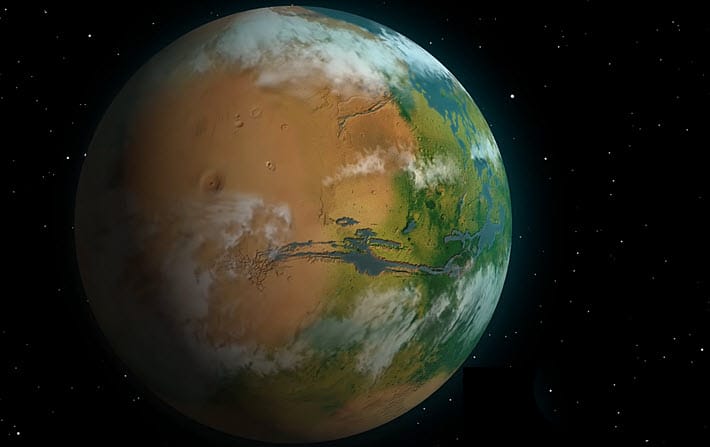Developed by a team led by University of Chicago Prof. Edwin Kite and in collaboration with Prof. Hooman Mohseni‘s research group at Northwestern University and Prof. Ramses Ramirez at the University of Central Florida, the concept involves generating iron or aluminum nanorods and suspending them in Mars’ atmosphere to create a powerful greenhouse effect, thereby warming the Red Planet.
As the planet warms, large amounts of carbon dioxide currently in the Martian ice caps and adsorbed into Martian soil will outgas, thickening the atmosphere, and warming the planet still more. Then as the planet continues to warm, some of Mars’ vast ice deposits will begin to melt, causing the streams of Mars to flow again and its lakes to fill, opening the way for life.
The concept is a breakthrough because previous terraforming plans required the production of fluorocarbon gases on Mars to begin the warming process, and the availability of the required quantities of fluorine on the Red Planet is not established. In contrast, iron or aluminum are so omnipresent everywhere on Mars that it gives the planet its color, and, indirectly, its name.
What would be the plan to control costs? Fe2O3 nano particles aren’t cheap, as you can see. At $3M per tonne and the need for, say, 10 gigatonnes to start off… That would put the cost of this plan at $30 quadrillion. I’m sure that, at that scale, the price would come down, but that’s a pretty high starting point. Toss in the fact that these nanoparticles would naturally settle out over time and the costs would increase further.
No one said terraforming was going to be cheap, but at that price, there has to be a less expensive option.
Looks like a cool concept. I’m curious to see what the numbers say about its feasibility though.




